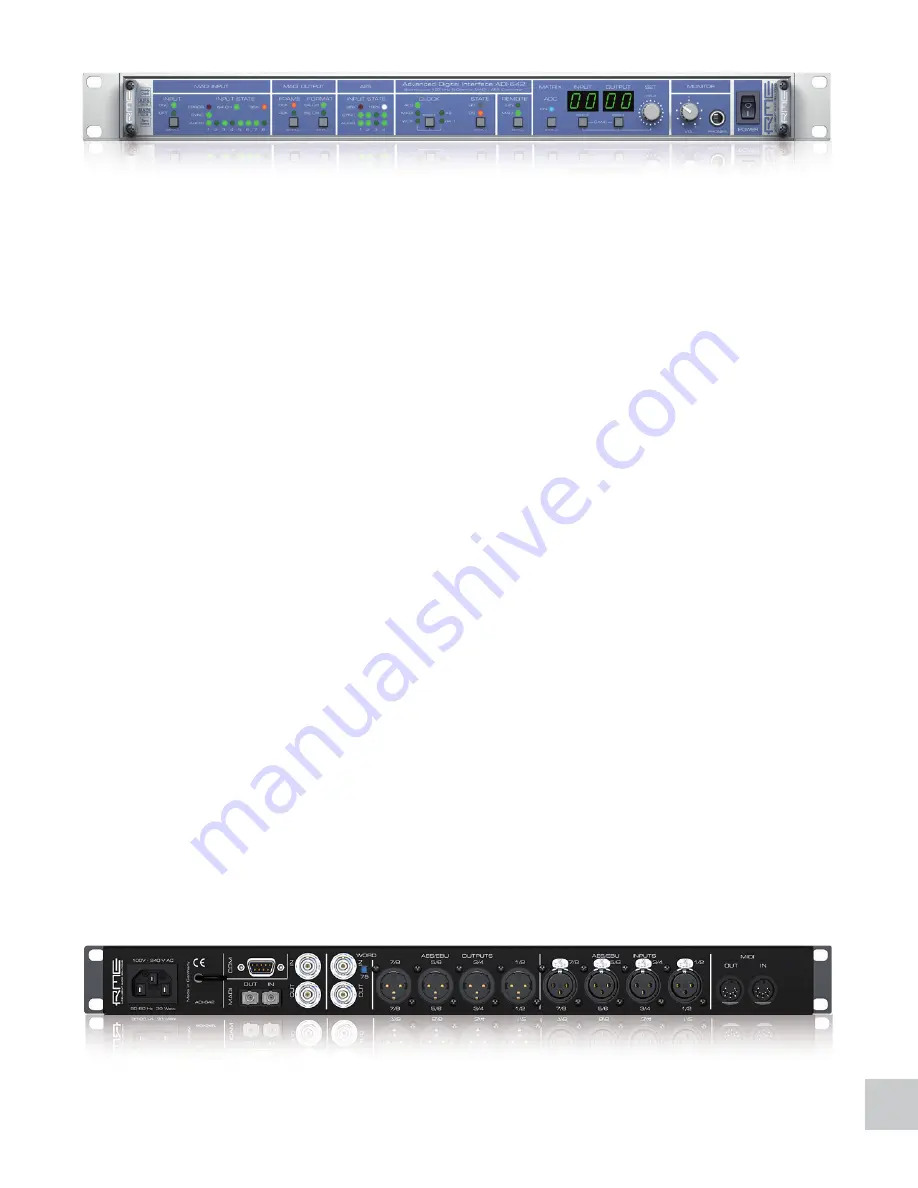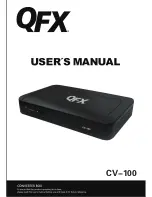
Features
A fully automatic input selection between optical and coaxial input off ers a useful redundancy mode for critical applications. Extensive status displays give information about Lock and
Sync states, audio content and the physical quality of the incoming signal.
The ADI-642 supplies word clock in Single, Double und Quad Speed, distributes Double Wire 96kHz signals into the MADI data stream and to the AES ports, and even supports the
double MADI sample rate (96K frame). The SyncAlign® and SyncCheck® technologies known from other RME products ensure perfect synchronization and clear detection of errors.
Also multiple units can be stacked and operated sample-aligned, using word clock. All settings are stored when the unit is switched off .
Additionally the ADI-642 features an easy-to-use 72 x 74 Matrix Router. An input signal can be assigned to every output channel, both for AES and MADI. This not only allows free
signal routing during format conversion, but also forwarding and routing of signals within the same format. An input signal can also be distributed to any number of outputs. With
more than one ADI-642, several MADI signals can be combined (merged) to one MADI stream.
16 MIDI channels can be transferred across MADI (even with 64 audio channels). The device can be fully remote controlled and confi gured via MIDI, and all status displays can be
queried through MIDI. Each ADI-642 can be given a separate ID, allowing separate remote controllability of various devices with only one MIDI channel.
Application examples include:
- AES/EBU frontend for RME’s HDSP MADI
- AES/EBU breakout box for any MADI device
- Digital Multicore, allowing signal transfer across long distances with a single cable
- MADI coaxial/optical or vice versa converter
- MADI redistributor, patchbay and router
- AES/MADI inserter
- Madi Merger
RMEs SteadyClock(TM) lets the ADI-642 use MADI without an additional word clock connection, and guarantees excellent clock quality in every situation. Due to the highly effi cient
jitter reduction, any clock signal (even AES and Word Clock) can be improved and refreshed, and subsequently be used as reference clock at the word clock output. Intelligent Clock
Control (ICC) will retain the last valid sample frequency in case of a loss of the input signal.
The analog monitor output operates in stereo and has a low impedance. It can be used as line and headphone output and supports 192 kHz at 112 dBA SNR. The routing matrix can
assign any of the 36 stereo input pairs to the monitor output.
2 / 3
AUTO DELAY COMPENSATION
A typical application example is the use of a HDSP MADI PCI-card in a computer with the ADI-642 as external AES interface. (schematic view) As MADI transmits 64 channels, up to
eight ADI-642 can be used to provide all 64 channels via 32 AES I/Os. The integrated Matrix Router makes such a setup easy to be confi gured. The MADI signal is passed through from
device to device. When passing through the MADI signal, a delay of a few samples per ADI-642 occurs, causing the AES inputs and outputs to show an off set. This problem is fi xed
by the Automatic Delay Compensation. Each ADI-642 automatically detects which unit it is within the chain, and corrects the AES input and output data so that all AES I/Os operate
sample-aligned. The additional Auto Confi guration mode sets up all ADI-642 to use consecutive AES I/Os. A manual confi guration via each unit’s Matrix is not required.
The ADI-642 is compatible to MADI interfaces of companies like Sony, Merging, Lawo, Euphonix, Stagetec, Jünger, Audio Service, AMS and others.





















